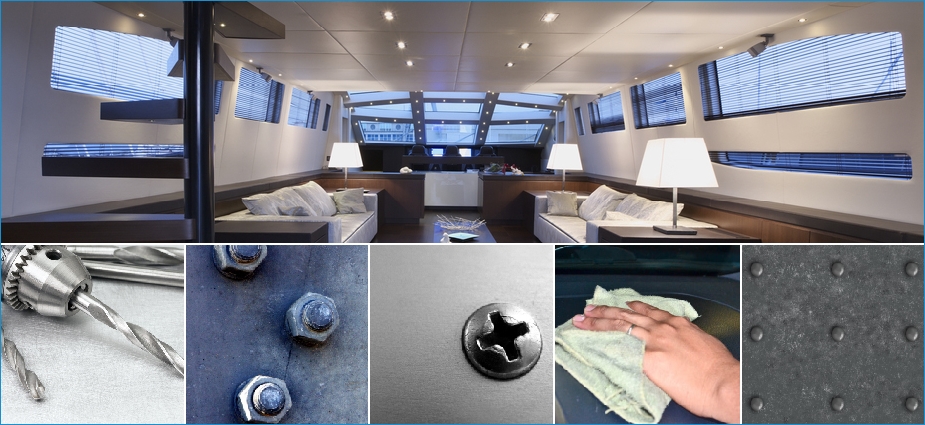+44 ( 0 ) 1254 775 238
contact@plastic-sheets.com+44 ( 0 ) 1254 775 238
contact@plastic-sheets.com
In view of the large number of factors which can influence the use of products, we suggest that customers carry out their own tests.
Drills should be sharp and ground with a “0”deg’ rake and workpiece, firmly held to prevent the plastic “corkscrewing” up the shank. Speeds of around 3000 rpm for a 3mm drill and 900 rpm for a 12mm drill are recommended. If a drill requires lubrication, use soapy water. Compounds such as “Rocol” or other oils must not be used. The distance between a hole and the edge of the material, should be not less that the hole diameter.
Plastics can be riveted, but any compression of the material will set up stress which may result in cracks in the future. If the material must be riveted, then it is advisable that low strength, large head, peel types are used, with additional washers spreading the load. Ideally a spacer, slightly thicker than the material, should be used. Rivet diameters should be at least equal to the total thickness of materials. Rivets should not be placed closer to an edge than about 5x their diameter. The hole in the material should maintain a clearance when the rivet is compressed.
Holes in the material should be a clearance for a screw. Screws should be inserted with a washer to spread the load and should be tightened to achieve minimum compression and hence minimum stress. Ideally a spacer, slightly thicker than t the material would be used, to prevent any compression. If a screw requires lubrication to help insertion, soapy water can be used. Compounds such as “Rocol” or other oils must not be used.
Many plastics bond s readily to themselves and other materials. Surface preparation and the correct choice of adhesive are crucial to a successful bond. However solvent attack will weaken any plastic, therefore it is important to select an adhesive which is free from chemicals unsuitable for your plastics. Advice from adhesive suppliers should be sought and tests carried out to evaluate the performance of adhesives.
Where a material is held with a different material (ie ABS & steel), the assembly should allow for the different thermal expansions to take place without compromising either material, eg by allowing enough clearance on assembly.
In many cases the use of detergent in warm water, or undiluted, applied with a soft cloth and rinsed off with water, will usually produce good results. A stiff bristle brush can be used with care where dirt is engrained in a textured surface. In extreme cases Iso-Propyl-Alcohol (Isopropanol) can be used on stubborn marks, however it must be used sparingly and thoroughly rinsed with water and dried. Excessive rubbing and the use of abrasives will damage surfaces and should be avoided.
Many plastics are suitable for use with a wide range of common chemicals, however resistance to some chemicals is only limited and some chemicals are not at all suitable. Simple “stress & paint” tests are a useful initial indicator s of effect, but do not necessarily ensure satisfactory performance in service. This involves retaining a strip of the plastic under stress (bowed) and painting, or soaking the chemical in question on the area of maximum stress. Leave the sample stressed for a prolonged period to observe any deterioration, repeating the process if necessary.
Applications involving plastics and chemicals (including bonding & cleaning) where there is a possibility of stress-cracking or other degradation, such as weathering, must be always be evaluated.